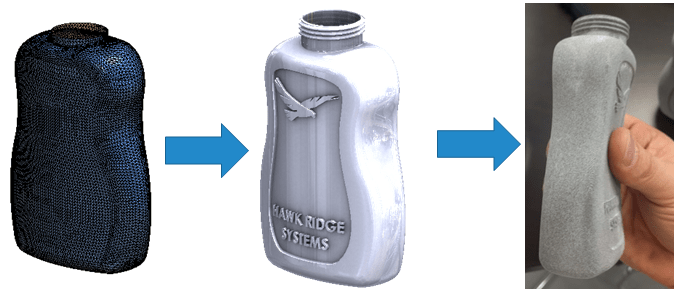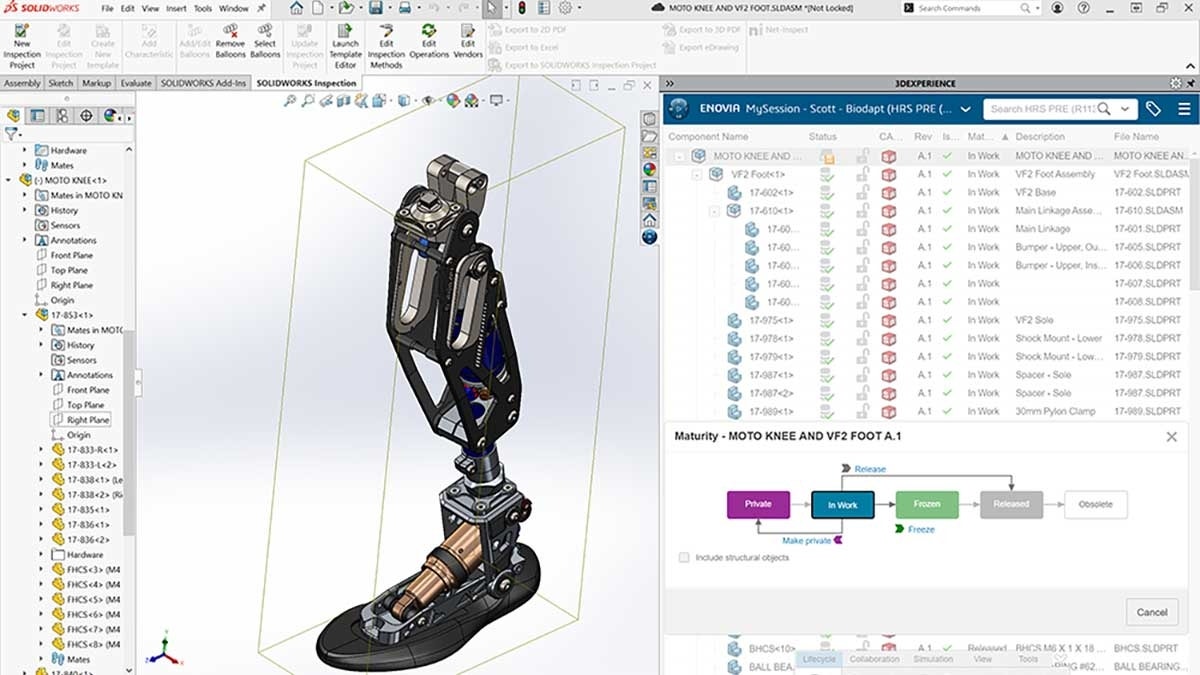SOLIDWORKS 2018 introduces a number of enhancements for working with imported mesh designs such as .STL and .OBJ files. These files are most commonly imported into SOLIDWORKS as Graphics bodies, which have seen a variety of new enhancements this year as well – please see our existing blog article and video for a detailed look into these new capabilities.
This article and companion video focuses on a new workflow for working with mesh files in SOLIDWORKS 2018, which is the ability to natively modify mesh models. This is accomplished via a new body type called a “Mesh body”.
Graphics bodies, as well as native Solid and Surface bodies, can be converted to this new Mesh body type. To convert a body, simply select it from the appropriate Bodies folder and choose the Convert to Mesh Body command.

This enables an exciting new workflow. Converting Solid bodies to Mesh bodies allows traditional SOLIDWORKS features to be used to modify mesh files. This can be seen in the image below, where SOLIDWORKS features are used to make the threads for the imported bottle scan. The thread body is then converted to a Mesh body, so that it can be merged together with a Combine feature.

Previously, any modifications to a mesh file would have required a time-consuming process to convert it to a solid or surface body first. The new Mesh body type and supported features allows direct manipulation of the mesh files, and they can be re-exported in the native mesh format such as .STL or .OBJ.
Aside from basic Boolean style operations like Combine/Subtract, there are a number of additional commands supported. The full list of features currently available for use with Mesh bodies is visible below:

Using these features allowed me to take an imported 3D Scan .STL, such as the bottle scan below, and add manufacturing details to prepare a functional 3D printed prototype without ever having to convert the mesh file! This example was printed on one of Hawk Ridge Systems’ HP 3D printers, and had enough strength and flexibility to be dropped or squeezed without fear of damage.

If you are using 3D scanning or 3D printing technology, this new Mesh body type and workflow should be an exciting new functionality.
It’s worth noting, however, that Mesh bodies are not exportable as neutral CAD file formats such as .STEP or .IGES – so if that is the end goal, a conversion process will be necessary. Tools like the ScanTo3D add-in or the partner product Geomagic for SOLIDWORKS can greatly speed up the conversion process of imported mesh data, if this is required.
For more information, check out our YouTube channel, get a SOLIDWORKS 3D CAD quote or contact us at Hawk Ridge Systems today. Thanks for reading!




